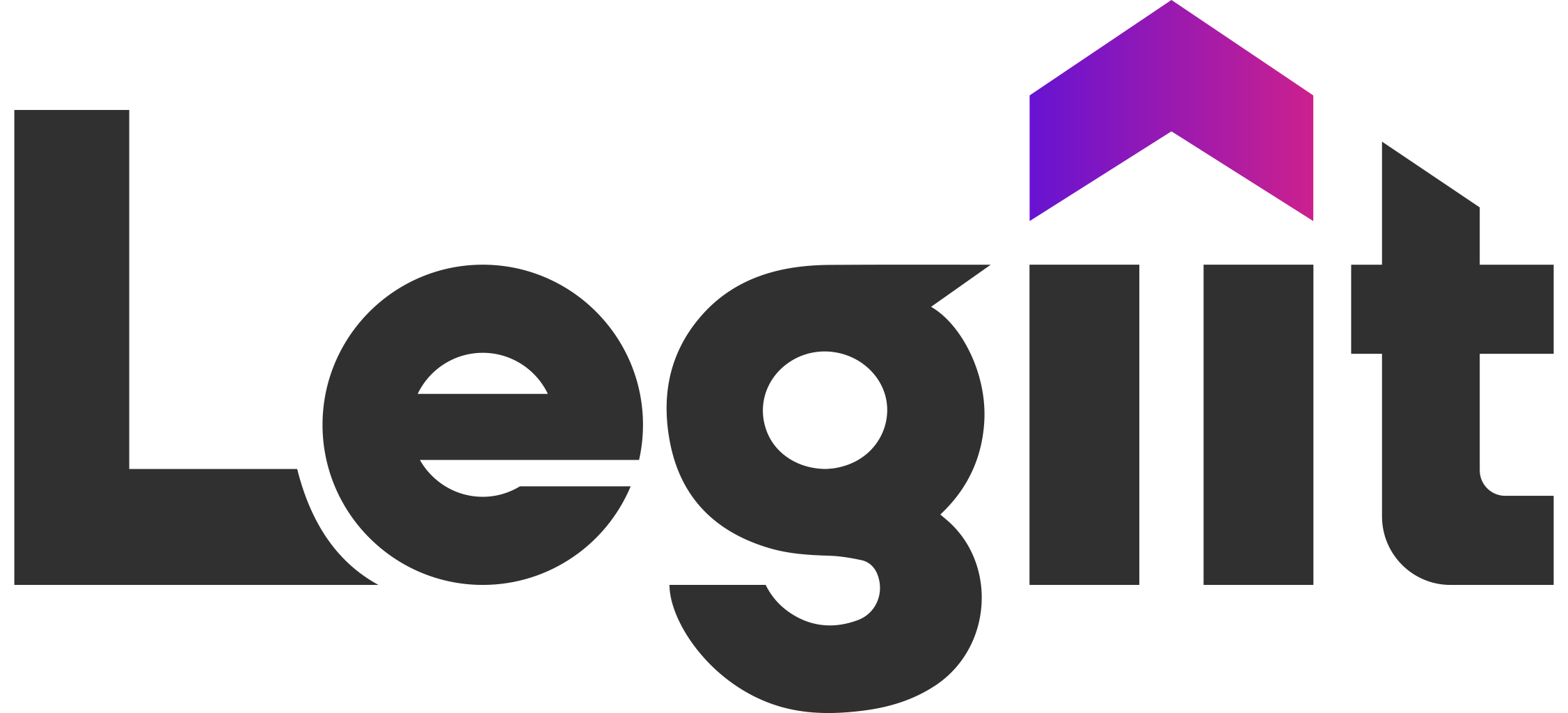A well-crafted blog post might attract clicks. But when it comes to driving conversions, your website's performance plays a crucial role.
While valuable content and offers are essential, it’s the smooth, efficient delivery of that content that can significantly impact your sales.
That's why site speed optimization is vital. A fast-loading website ensures that users can engage with your content without frustration.
So, how do you make sure your site is up to speed? It starts with understanding the key elements of site speed optimization and how they contribute to an excellent user experience.
That’s what we’re about to discuss. Let’s get started.
Why You Need to Improve Site Speed
Site speed is more than just a technical consideration—it's a crucial factor that can make or break your online presence. What are the 3 factors that make site speed more important for your business?
#1. The Impact on User Experience
User experience is at the heart of any successful website, and site speed is one of the most crucial factors that influence it.
When users visit your site, they expect it to load quickly—typically within a few seconds. If your site takes too long to load, users are likely to become frustrated and leave, resulting in a higher bounce rate.
Moreover, a slow website can negatively affect how users perceive your brand. In an era where convenience and speed are highly valued, a lagging site can make your business seem outdated, unreliable, or unprofessional.
On the other hand, a fast, responsive website creates a positive first impression, encouraging users to stay longer, explore your content, and eventually convert into customers.
#2. How Site Speed Affects SEO
Search engines, particularly Google, have made it clear that site speed is a ranking factor. While it's not the most important factor, it can give you an edge over competitors with similar content quality.
Here is a direct quote from Google.

Here's how site speed influences SEO:
- Direct Ranking Factor: Google has used site speed as a ranking signal since 2010, and it became even more important with the introduction of mobile-first indexing.
- Improved Crawl Efficiency: Faster sites allow search engine bots to crawl more pages using the same resources, potentially leading to better indexing of your site.
- Core Web Vitals: These metrics, which include Largest Contentful Paint (LCP), First Input Delay (FID), and Cumulative Layout Shift (CLS), are now key ranking factors. A faster site naturally performs better on these metrics.
Let’s compare results from two sites with two different loading speeds I tested using the Legiit GMSD dashboard.
Site A

Site B.

Which one do you think has better SEO?
Reduced Bounce Rate: Faster sites tend to have lower bounce rates, which is a positive signal to search engines about your site's quality and relevance.
#3. The Connection Between Site Speed and Conversion Rates
The speed at which your website loads can significantly impact your conversion rates—arguably the most critical metric for any online business.
Conversion rates refer to the percentage of visitors who take a desired action on your site, such as making a purchase, signing up for a newsletter, or filling out a contact form. The faster your site loads, the more likely visitors are to stay, engage, and convert.
Sounds cool, right? On to the next item.
Key Elements of Site Speed Optimization to Improve Site Speed
What are the key elements of site speed optimization that can significantly improve your website's performance?
#1. Image Optimization As A Core Website Performance Guide Principle
Images often account for the majority of a web page's weight. Optimizing them is crucial for improving load times:
- Use appropriate file formats (JPEG for photographs, PNG for graphics with transparency)
- Compress images without sacrificing quality
- Implement lazy loading to defer off-screen images
- Use responsive images to serve different sizes based on device screens
For example, tools like ImageOptim or plugins like Smush for WordPress can automate much of this process, potentially reducing image file sizes by 20-80% without visible quality loss.
#2. Minifying CSS, JavaScript, and HTML
Minification removes unnecessary characters from your code without changing its functionality:
- Strip out white space, comments, and formatting
- Shorten variable and function names where possible
- Use shorter alternatives for common programming patterns
Tools like UglifyJS for JavaScript and cssnano for CSS can automate this process. For HTML, consider using plugins like HTML Minifier. These techniques can reduce file sizes by 10-20%, leading to faster load times.
#3. Leveraging Browser Caching
Browser caching stores webpage resources locally on a user's device, reducing the need to reload the entire page on subsequent visits:
- Set appropriate expiration times for different types of content
- Use ETags to validate cached resources
- Implement conditional GET requests
For instance, you might set cache expiration times of a year for static resources like your logo, but only a day for more dynamic content. This can significantly reduce server load and improve page speed for returning visitors.
#4. Implementing Content Delivery Networks (CDNs)
CDNs distribute your content across multiple, geographically diverse servers.
- Reduces distance between users and website resources
- Decreases server load on the origin site
- Provides a level of redundancy
Using a CDN can reduce page load times by 50% or more, especially for users geographically distant from your main server. Check out popular CDN providers, including Cloudflare, Amazon CloudFront, and Fastly.
#5. Reducing Server Response Time
Your server response time is affected by the amount of traffic you receive, the resources each page uses, the software your server uses, and the hosting solution you use.
- Optimize your database
- Improve server configuration
- Use a high-quality hosting provider
For example, optimizing database queries or upgrading to a more powerful hosting plan can potentially cut server response times by several hundred milliseconds.
#6. Prioritizing Above-the-Fold Content
Prioritize loading what users see first:
- Structure HTML to load the most critical content first
- Defer loading of non-critical resources
- Inline critical CSS and defer non-critical CSS
Tools like Chrome's Coverage tab can help identify which CSS and JavaScript are necessary for the initial render. By focusing on above-the-fold content, you can improve perceived load times even if the entire page takes longer to fully load.
Now that we’re done with looking at the page speed strategies and speed optimization tips, let’s move to tools and techniques.
Tools and Techniques for Measuring Site Speed
We have tons of tools that can measure site speed in the industry, but not all of them are efficient. Here are some of the tools we’ve handpicked, tested, and prioritized:
#1. Legiit GMSD Dashboard
This dashboard is excellent for getting a comprehensive view of your site's overall health, not just its speed—it’s the one we used to get the results we posted earlier. It's particularly useful for developers who want to integrate performance testing into their workflow.
What I like about this tool is that it leverages AI technology to recommend top SEO freelancers that can help you improve your site speed.

#2. Google PageSpeed Insights
Google PageSpeed Insights is a powerful, free tool that provides both mobile and desktop performance scores for your website.
- Scores your page out of 100 based on various performance metrics
- Offers specific suggestions for improvement
- Provides real-world performance data from the Chrome User Experience Report
PageSpeed Insights is particularly valuable because it directly reflects Google's performance expectations, which can impact your search rankings.
#3. GTmetrix
GTmetrix offers a more detailed analysis of your website's performance, including waterfall charts and video playbacks of page loads.
- Provides scores based on PageSpeed and YSlow metrics
- Offers performance monitoring and alerting features
- Allows testing from multiple global locations
GTmetrix is excellent for identifying specific resources that are slowing down your site, making it easier to prioritize optimizations.
#4. WebPageTest
WebPageTest is a comprehensive tool that allows for highly customizable performance testing.
- Supports testing from multiple locations and browsers
- Offers advanced settings like connection throttling and repeat views
- Provides detailed waterfall charts, resource breakdowns, and filmstrip views
#5. Lighthouse
Lighthouse is an open-source, automated tool for improving web page quality. It's built into Chrome DevTools and is also available as a Chrome extension.
- Audits performance, accessibility, progressive web apps, and more
- Provides scores and detailed suggestions for improvement
- Can be run directly from Chrome DevTools
Common Pitfalls in Site Speed Optimization: A Website Performance Guide
While optimizing your website's speed is crucial, it's easy to fall into certain traps. Let's look at some common pitfalls to avoid in your quest for a faster website and other speed optimization tips.
#1. Overlooking Mobile Performance
A site that's fast on desktop isn't necessarily fast on mobile. In fact:
- Mobile traffic often surpasses desktop traffic for many websites
- Google uses mobile-first indexing for search rankings
- Mobile users often have slower connections and less powerful devices
How to avoid this pitfall:
- Always test your site's performance on mobile devices
- Implement responsive design practices to improve site speed
- Optimize images and videos for mobile viewing
- Consider using Accelerated Mobile Pages (AMP) for critical content
#2. Neglecting Regular Site Audits
Website performance isn't a "set it and forget it" task. Neglecting regular audits can lead to gradual performance degradation. Here is why:
- New content and features can impact site speed over time
- Third-party scripts and plugins may become outdated or bloated
- Search engines favor websites that maintain good performance
To avoid this pitfall, you need to:
- Schedule regular performance audits (e.g., monthly or quarterly)
- Use automated tools like Legiit GMSD Dashboard to monitor performance metrics
- Review and optimize new content and features before they go live
Consistent monitoring tools like Google Analytics or more specialized solutions like New Relic can help you track performance trends over time.
#3. Heavy Reliance on Plugins
While plugins can add functionality to your site, overusing them can significantly slow it down. This is true because:
- Each plugin adds extra code, increasing page weight
- Plugins often make additional server requests
How to avoid this pitfall:
- Regularly review your plugins and remove unnecessary ones
- Choose lightweight, well-maintained plugins from reputable sources
- Consider coding custom solutions for simple functionality
#4. Ignoring Server Performance
While client-side optimizations are important, server performance plays a crucial role in site speed. For instance:
- Slow server response times can bottleneck overall site performance
- Poor server configuration can lead to increased load times
- Inadequate hosting can cause slowdowns during traffic spikes
How to avoid this pitfall:
- Choose a reliable, performance-oriented hosting provider
- Optimize your server configuration (e.g., enable Gzip compression, leverage browser caching)
- Consider using a content delivery network (CDN)
- Monitor server response times and upgrade resources as needed
Site Speed and Website Performance Guide for Better SEO: Final Thoughts
Up to this point, we’ve discussed all the key elements of site speed optimization. It's not just about chasing faster load times—it's about creating an optimal user experience, improving search engine rankings, and ultimately driving better business results.
Therefore, investing your resources to improve site speed using the page speed strategies and speed optimization tips we’ve discussed in this article is an investment in your business's future.
The key that you need in this website performance guide is to understand what specific area you need to improve site speed, choose the right tool(s), and get things done.
All the best.













 Download
Download